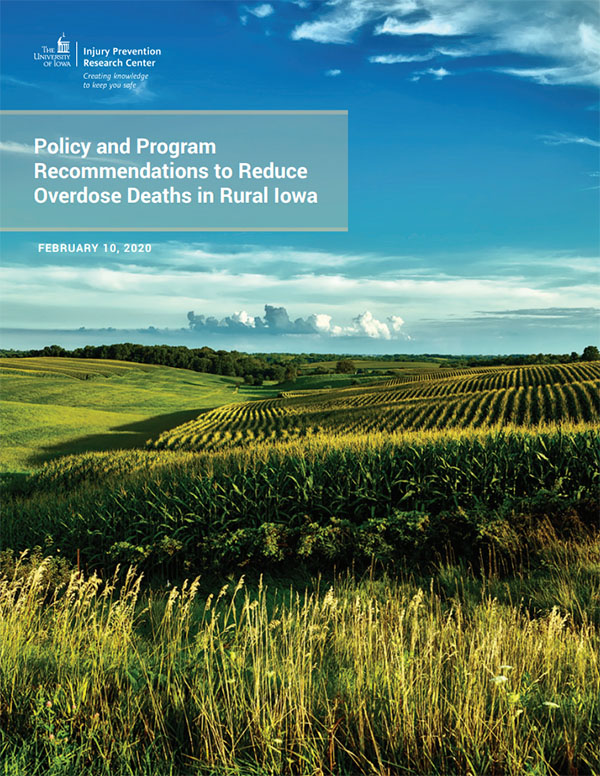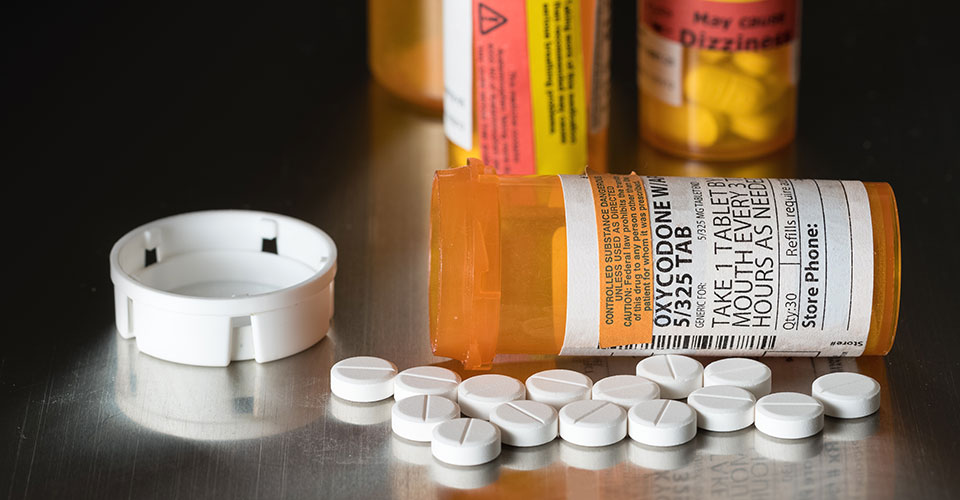Breadcrumb
IPRC report identifies five priorities for addressing overdoses
Published on February 13, 2020
 The University of Iowa’s Injury Prevention Research Center (UI IPRC) has released a new report highlighting policy and program recommendations to reduce opioid overdose deaths in rural Iowa.
The University of Iowa’s Injury Prevention Research Center (UI IPRC) has released a new report highlighting policy and program recommendations to reduce opioid overdose deaths in rural Iowa.
In 2017, the UI IPRC convened a group of stakeholders to consider actions to address the opioid crisis. Health care providers, law enforcement officers, public health officials, and others developed a list of priorities that lawmakers and policy makers could consider.
Some of those priorities were included in a new law passed in 2018. Among them are a requirement that practitioners check the state’s prescription monitoring program before prescribing an opioid to a patient, and strengthened prescriber education requirements on prescribing medications for chronic pain.
In the fall of 2019, the IPRC convened a second group of stakeholders to consider important next steps the state and communities can take in response to the latest developments. The report, Policy and Program Recommendations to Reduce Overdose Deaths in Rural Iowa, identified the five most important priorities:
- Develop programs that take a holistic view of treatment and recovery, incorporating support for employment, housing, and other social needs rather than focusing on medication-assisted treatment alone.
- Develop timely communication networks between pharmacists, law enforcement officials, employers, and other stakeholders. The opioid epidemic is a multifaceted issue that requires collaborative efforts from members of the community.
- Provide funding for naloxone access and distribution. Naloxone is a drug that has proved effective at helping people who have overdosed on opioids, but it’s expensive and not widely available.
- Combat stigma around opioid use disorder. People with substance use disorders are often stigmatized by language used to describe them or their disorder, or the reluctance of medical providers to offer services. In addition, misunderstandings of the effectiveness of medications used to treat opioid use disorder limits the impact of treatment and support.
- Consider polysubstance drug use in surveillance, prevention, and treatment efforts.
According to Carri Casteel, associate professor of occupational and environmental health at the University of Iowa College of Public Health and associate director for research at the IPRC, some communities and organizations in Iowa are already taking steps to address the crisis locally that could be used as models for others, but much more needs to be done.
“Iowa is fortunate that the opioid epidemic has not yet ravaged the state as it has others,” says Casteel. “But we need our state and community leaders to take proactive steps to ensure that it does not.”
